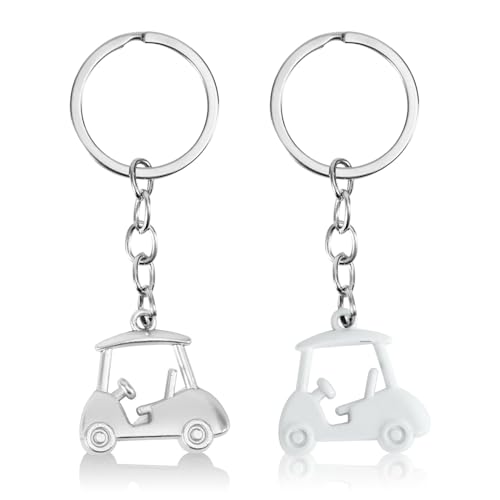Ever wondered how often you should swap out your trusty golf ball for a new one? It’s not just about keeping your game fresh; it’s about performance. Whether you’re teeing off on a sunny morning or practicing your putt for the umpteenth time, the condition of your golf ball can make a real difference.

You might think a golf ball can last forever, but that’s not quite the case. Even the best balls have a shelf life, and knowing when to change them is key to staying on top of your game. Let’s dive into what affects a golf ball’s lifespan and how you can tell it’s time for a change.
What Affects the Lifespan of a Golf Ball?
When you’re aiming to shoot lower scores, understanding what impacts your golf ball’s lifespan is key. Diving right in, let’s chat about the factors that can prematurely age your trusty sphere.
Type of Play
First things first, how often you play and the type of courses you frequent matter. If your schedule has you hitting the links multiple times a week or you’re playing courses with harsh terrain, your balls are going to take a beating. Sharp objects like rocks and trees can create cuts and scrapes, leading to an unfortunate loss in performance.
Storage Conditions
Believe it or not, the way you store your golf balls can make a big difference. Extreme temperatures and moisture are not friends of longevity. Keep your balls in a cool, dry place to help maintain their integrity.
Water Hazards
We’ve all had the misadventure of landing in a water hazard. Unfortunately, prolonged submersion can affect the ball’s outer materials, potentially altering its weight and flight characteristics. It’s always better to err on the side of caution and swap out a waterlogged ball.
Impact Damage
Your golf ball endures significant force with each swing. Over time, this impact can cause the cover to weaken or even crack. Keep an eye out for visible damage—it’s a telltale sign that your golf ball is crying out for retirement.
Advanced Wear and Tear
Even without any noticeable cuts or gouges, golf balls can experience wear on a microscopic level. Repeated hits gradually degrade the ball’s surface, leading to subtle changes in how it reacts upon impact.
Remember, your game is as good as the tools you use. Pay attention to what your golf balls go through because your journey to lower scores depends on every advantage you can get. Now, moving on, let’s consider how you can identify signs that it’s time for a change…
The Impact of Frequency of Play
As a low handicap golfer who’s navigated the fairways and greens most of your life, you understand that consistency is key to lowering scores. But have you considered how often you hit the links could be affecting the life expectancy of your golf balls? Yes, frequency of play has a direct correlation to the number of times you’ll need to replace your trusty spheres.
Now let’s break this down. If you’re the kind of golfer who plays several rounds a week, your golf balls endure more. More swings mean more impacts, and each of those collisions has the potential to compromise the integrity of the ball. Manufacturers design golf balls to withstand a great deal of use, but there’s no escaping the fact that regular play will hasten wear and tear.
On the flip side, if you only play a round or two each month, your golf balls can last much longer. It’s not just about the frequency, though; it’s also about the quality of each hit. A perfectly struck ball will generally suffer less damage than one that’s been sliced into the trees or skimmed across a cart path.
Keeping Track of Ball Performance
As your game progresses, keeping a keen eye on your ball performance is crucial. You might notice that after a number of rounds:
- The ball doesn’t fly as far
- Its reaction on the greens becomes less predictable
- The appearance is certainly worse for wear
These are telltale signs that it’s time to swap out your ball for a fresh one. Investing in new balls might feel like a splurge, but it’s an investment in your game’s consistency and, ultimately, your overall performance.
Monitor every round and assess your golf ball’s condition as part of your routine. Not only will this help you decide when it’s time for a change, but it will also give you insights into how different shots affect your ball. This analysis is invaluable in helping you understand how to protect and get the most out of each ball, round after round. Remember, the life of your golf ball isn’t just about durability; it’s about ensuring peak performance every time you tee up.
Signs It’s Time to Change Your Golf Ball
You’re always striving to improve your game and lower your scores. Understanding when to switch out your golf ball is key. After all, your ball is the one piece of equipment you use for every stroke.
Inconsistent Flight Patterns may start to plague your once steady and predictable ball. If you’ve noticed that the trajectory is not as piercing as it used to be or the ball wavers in flight, that’s your cue. Sure, wind and technique play a role, but your ball should not be a wild card.
Keep an eye out for Decreased Distance as well. When a ball loses its integrity, you’ll see a noticeable drop in yardage. This could mean you’re suddenly struggling to reach a par 4 in two shots, where you previously had no issue. It’s not just about your swing; the energy transfer from club to ball isn’t what it used to be when the ball’s core is compromised.
Be wary of Visible Damage. Cuts, scrapes, and excessive scuffs don’t just mar the appearance; they affect performance. A blemish-free ball will fly true, while a damaged one could veer off unexpectedly. And it’s not just about cuts—discoloration and loss of glossiness should also alert you that it’s time for a change.
Lastly, pay attention to the Feel of the Ball on and around the greens. A harder feel upon impact, especially with your wedges and putter, indicates that the ball’s outer layers have deteriorated. You need that soft touch for finesse shots, so don’t let an old ball undermine your short game.

Monitor these telltale signs closely. Remember, while there’s no set number of holes after which you must replace your ball, keeping tabs on its condition is a must. By checking for these signs, you’ll know when to retire your trusty sphere and bring in a fresh one to maintain a top-notch performance.
The Effect of Storage Conditions
Have you ever wondered if the spot where you stash your golf balls could be chipping away at their life expectancy? Storage conditions are more crucial than you might think.
Imagine the trunk of your car. It seems like a convenient place to keep your golf gear, right? But it’s a battleground for your balls. Extreme temperatures in that confined space can mess with the rubber core inside the ball, leading to a loss in performance before you even hit the links. Excessive heat can make the core expand, while cold weather can make it rigid, both affecting the ball’s responsiveness.
Here’s the inside scoop: always store your golf balls in a cool, dry place. Think about using your garage or a dedicated spot in your home. That stable environment will help maintain the integrity of the golf balls longer, ensuring they perform as needed on every shot.
It’s not just temperature that’s the enemy. Humidity can be just as devious. Storing your golf balls in a damp environment can introduce moisture into the materials, starting a slow degradation process. Over time, this can affect the ball’s weight and structure, which in turn can alter how it flies through the air and rolls on the green.

Let’s break down some optimal storage tips that’ll help your golf balls keep their spunk:
- Avoid leaving your balls in the car or any location with fluctuating temperatures.
- Use a climate-controlled space like a closet inside your house.
- If you live in a high-humidity area, consider using a dehumidifier.
- Check on them periodically, especially if they are stored for an extended period.
By following these simple steps, you’ll ensure that the only differences in your game are the ones you’ve worked on at the range, not the ones caused by a deteriorated golf ball. Keep in mind, proper care complements consistent play – it could be the unsung hero of shaving strokes off your game.
Conclusion
So there you have it. You’re now equipped with the knowledge to keep your golf game at its best by understanding when to switch out your golf ball. Remember, it’s not just about how many rounds you’ve played but also how you play and care for your golf balls. Keep an eye out for those telltale signs of wear and ensure your balls are stored properly. That way, you’re always ready to hit the course with confidence, knowing your equipment is in top shape. Here’s to many more perfect shots and enjoyable rounds!










